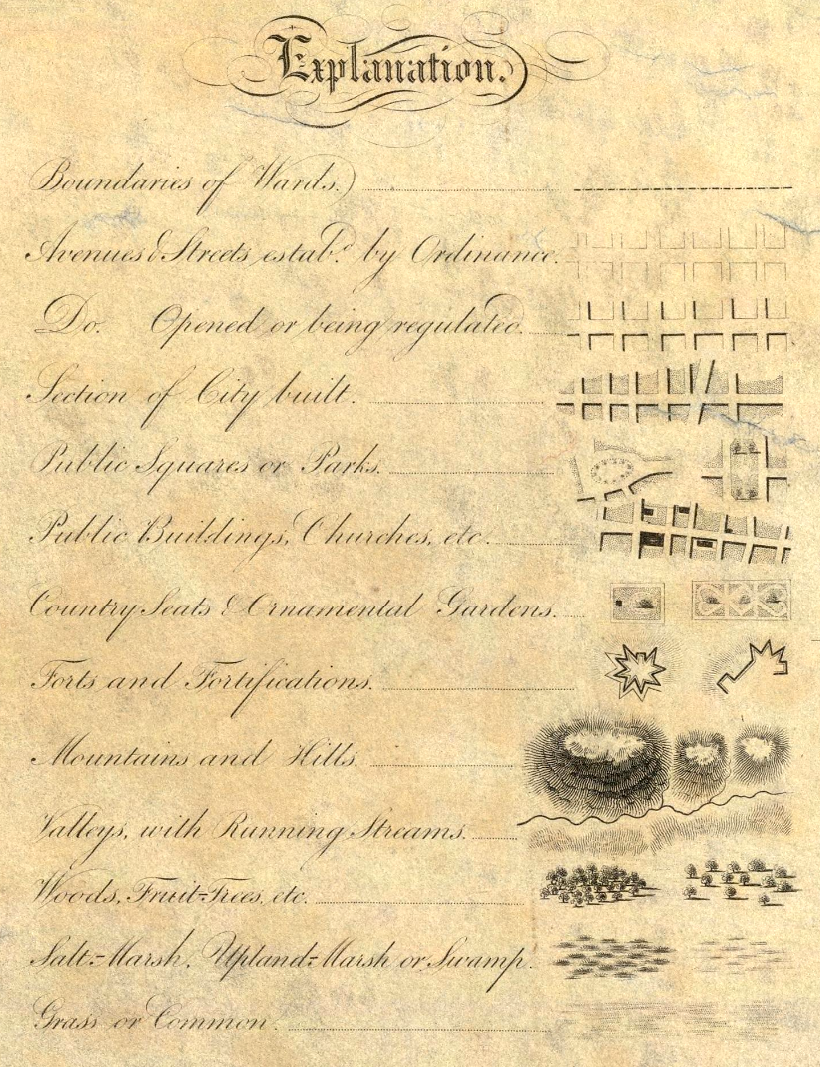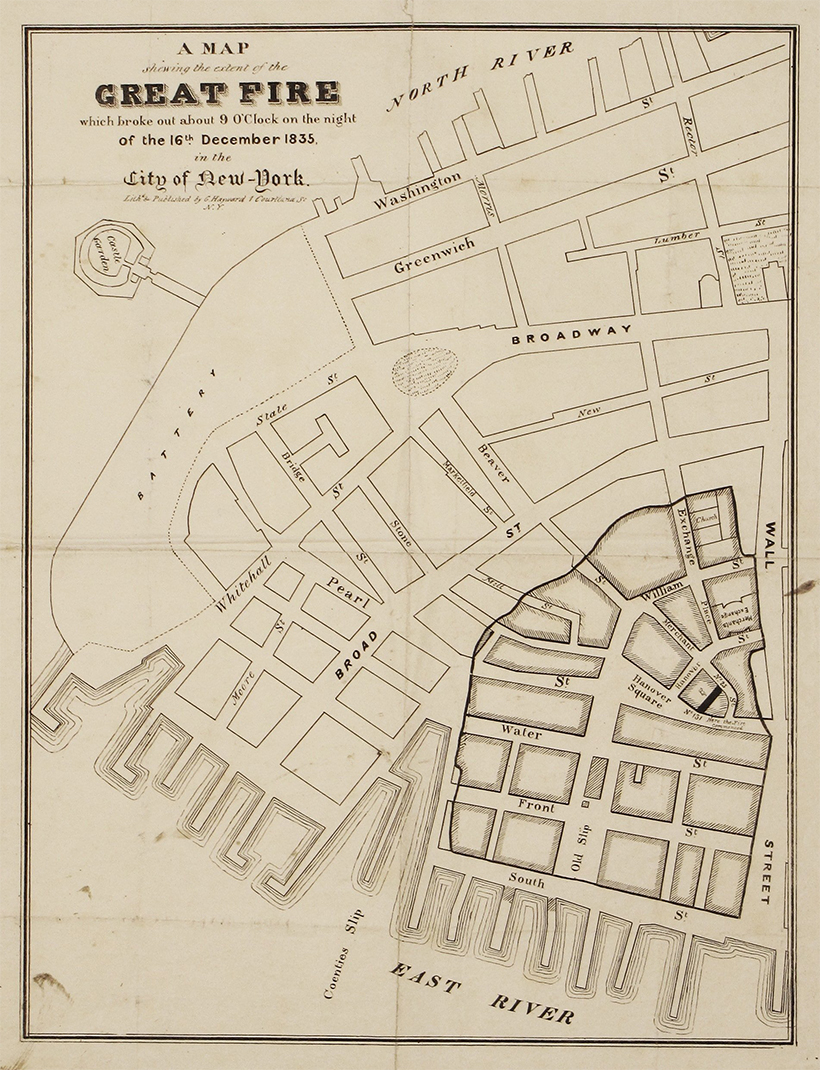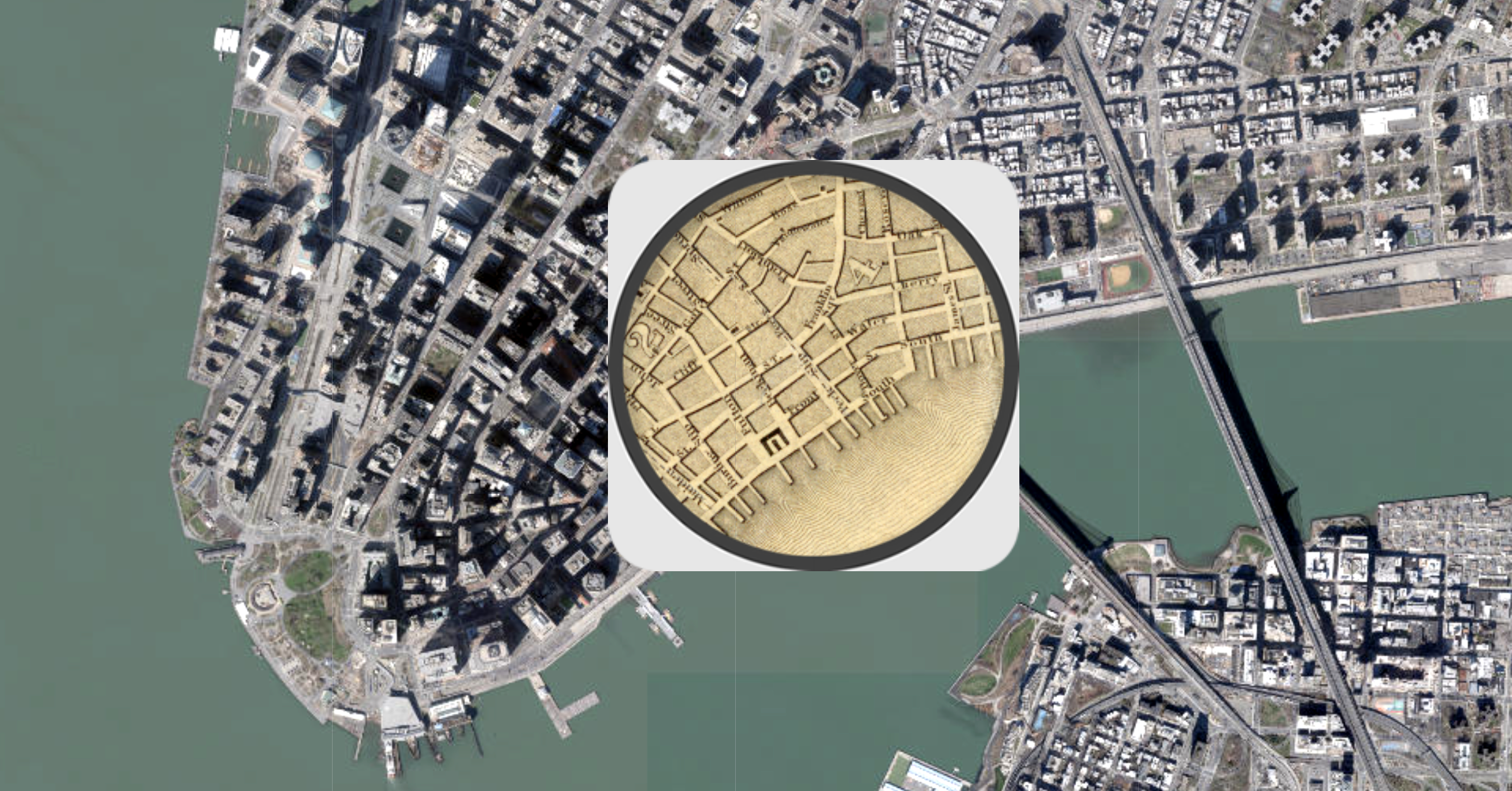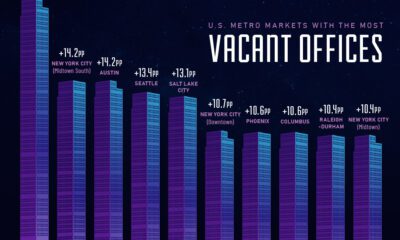Misc
This Clever Map is a Window into 19th Century New York City
The early 19th century was a time of great change for New York, which had already cemented its status as America’s largest city.
The opening of the Erie Canal helped turn the city into a shipping powerhouse, and there was a building boom on the horizon. Cholera epidemics, fires, and riots swept through the city at various points.
This fascinating interactive map, from Esri, is a snapshot of New York City during the tumultuous time (1836 to be exact), overlaid on the modern-day satellite map.
Getting the Lay of the Land
The base map used above is the stunning “Topographical Map Of The City and County Of New–York, and the adjacent Country”, published by the prodigious mapmaker, Joseph Colton.
For easy viewing, the map’s legend is below:

This map includes all the usual features, such as roads and prominent buildings, but it also has some clever secondary information built in as well. For one, shading indicates ares that were more built-up at the time. There are also a number of visual techniques to indicate topographical features as well. After all, NYC wasn’t as extensive as it is today, and much of the land depicted in the map is still undeveloped.
The full map is well worth exploring as well, as there are a number of beautiful illustrations throughout.
Tool tip: Click the X on the info bar to hide it. (Mobile: Click the map, then the magnifying glass.)
The Big Picture: New York City in 1836
At this point in time, development in Lower Manhattan extended until about 14th Street, where buildings began to give way to open spaces. The city’s grid pattern was beginning to take shape, following the Commissioners’ Plan laid out in 1811. At the time, New York was anticipating massive growth, and the straightforward grid pattern was an efficient way to prepare the city for rapid expansion.
In the 1800s, fire was an ever-present danger for city dwellers. In fact, a major fire tore through Lower Manhattan a year prior to when this map was published.

Points of Interest
There are a number of points worth visiting on this map.
Transit Begins to Take Shape
In the 1830s, New York City’s first railroad line—horse powered for its first few years—connected Prince Street to the Harlem River, accelerating the city’s expansion northward from Lower Manhattan. This route is still recognizable today as the Harlem Line.
Evolving Shorelines
One very obvious difference between the two maps is how much land has been reclaimed along shorelines in the area. Battery Park City, on the west side of downtown, and the Brooklyn Navy Yard are two prominent examples of infill. Randall’s Island, located near the top of Manhattan, is also an interesting place to observe changes in topography. Randall’s Island is actually made up of three islands that were eventually conjoined in the 1960s.
This interactive map is a great place to explore changes to NYC’s shoreline over time.
Taming the Landscape
Midtown Manhattan is worth zooming into for a couple of reasons. First, the outline of Central Park is visible, although the park would officially be approved until almost 20 years later.
As well, this topographical map clearly shows the numerous outcroppings spread across the island. Manhattan was far from flat in the 1800s, and it took a tremendous amount of effort—starting with gunpowder, pickaxes, and horse-drawn carts—to level the land.
Looking at these historical maps is a reminder that the New York City we know today is the product of hundreds of years of human effort, and that cities continue to evolve over time.
Maps
Mapped: The 10 U.S. States With the Lowest Real GDP Growth
In this graphic, we show where real GDP lagged the most across America in 2023 as high interest rates weighed on state economies.

The Top 10 U.S. States, by Lowest Real GDP Growth
This was originally posted on our Voronoi app. Download the app for free on iOS or Android and discover incredible data-driven charts from a variety of trusted sources.
While the U.S. economy defied expectations in 2023, posting 2.5% in real GDP growth, several states lagged behind.
Last year, oil-producing states led the pack in terms of real GDP growth across America, while the lowest growth was seen in states that were more sensitive to the impact of high interest rates, particularly due to slowdowns in the manufacturing and finance sectors.
This graphic shows the 10 states with the least robust real GDP growth in 2023, based on data from the Bureau of Economic Analysis.
Weakest State Economies in 2023
Below, we show the states with the slowest economic activity in inflation-adjusted terms, using chained 2017 dollars:
| Rank | State | Real GDP Growth 2023 YoY | Real GDP 2023 |
|---|---|---|---|
| 1 | Delaware | -1.2% | $74B |
| 2 | Wisconsin | +0.2% | $337B |
| 3 | New York | +0.7% | $1.8T |
| 4 | Missississippi | +0.7% | $115B |
| 5 | Georgia | +0.8% | $661B |
| 6 | Minnesota | +1.2% | $384B |
| 7 | New Hampshire | +1.2% | $91B |
| 8 | Ohio | +1.2% | $698B |
| 9 | Iowa | +1.3% | $200B |
| 10 | Illinois | +1.3% | $876B |
| U.S. | +2.5% | $22.4T |
Delaware witnessed the slowest growth in the country, with real GDP growth of -1.2% over the year as a sluggish finance and insurance sector dampened the state’s economy.
Like Delaware, the Midwestern state of Wisconsin also experienced declines across the finance and insurance sector, in addition to steep drops in the agriculture and manufacturing industries.
America’s third-biggest economy, New York, grew just 0.7% in 2023, falling far below the U.S. average. High interest rates took a toll on key sectors, with notable slowdowns in the construction and manufacturing sectors. In addition, falling home prices and a weaker job market contributed to slower economic growth.
Meanwhile, Georgia experienced the fifth-lowest real GDP growth rate. In March 2024, Rivian paused plans to build a $5 billion EV factory in Georgia, which was set to be one of the biggest economic development initiatives in the state in history.
These delays are likely to exacerbate setbacks for the state, however, both Kia and Hyundai have made significant investments in the EV industry, which could help boost Georgia’s manufacturing sector looking ahead.
-

 Technology1 week ago
Technology1 week agoCountries With the Highest Rates of Crypto Ownership
-

 Mining6 days ago
Mining6 days agoVisualizing Copper Production by Country in 2023
-

 Politics7 days ago
Politics7 days agoCharted: How Americans Feel About Federal Government Agencies
-

 Healthcare1 week ago
Healthcare1 week agoWhich Countries Have the Highest Infant Mortality Rates?
-

 Demographics1 week ago
Demographics1 week agoMapped: U.S. Immigrants by Region
-

 Economy1 week ago
Economy1 week agoMapped: Southeast Asia’s GDP Per Capita, by Country
-

 Automotive1 week ago
Automotive1 week agoHow People Get Around in America, Europe, and Asia
-

 Personal Finance1 week ago
Personal Finance1 week agoVisualizing the Tax Burden of Every U.S. State















